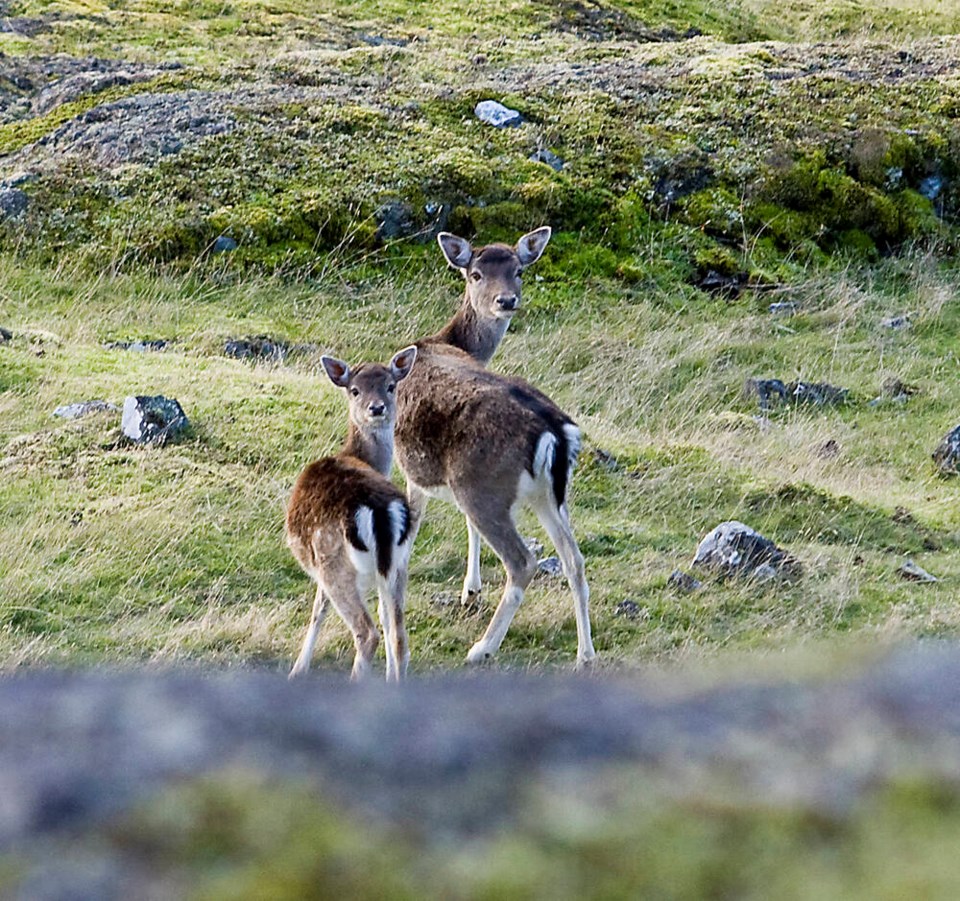Only 63 of the 84 deer killed on Sidney Island during a recent cull were confirmed to be fallow deer, Parks Canada said Wednesday.
Eighteen of the animals killed in the cull, which cost $834,000 and involved shooting from a helicopter, were native black-tailed deer, and three were not confirmed as either black-tailed or fallow deer.
The cull occurred between Dec. 1 and 11 through nighttime ground hunting and a sharpshooter in a helicopter during the day.
It was the first phase of a $5.9-million plan to eradicate invasive fallow deer from Sidney and to restore the Douglas-fir forest ecosystem.
Parks Canada has previously said the cull of fallow deer would likely also kill black-tailed deer, and that the native species would probably re-establish itself by swimming from other islands. If not, they would be re-introduced.
Carla Purves, a property owner on Sidney Island, noted that the latest organized hunt by owners killed 54 deer this fall at no cost to taxpayers.
Purves wants to know where the rest of the estimated $5.9 million cost will go and how much the second phase of the cull, expected to take place in late 2024 to 2025, will cost.
Parks Canada did not immediately respond to questions Wednesday about the cost of phase 2, which involves ground hunting with dogs.
The federal agency has said that during the second phase, temporary fencing will create enclosed zones of 40 to 120 hectares across Sidney Island and professional ground-based marksmen will kill the remaining deer.
Paul Lalonde, another owner on Sidney Island, said he hoped Parks Canada would share the age and sex of deer killed during the first phase.
That information could be used to model the population of the fallow deer and determine its trajectory.
Knowing that would help show whether organized annual hunts were effective at managing the population.
He said Parks Canada is not acknowledging how few deer were harvested during the first phase of the cull.
“It’s sad they’re spending this much money on so few deer,” Lalonde said.
The cull has divided property owners on Sidney Island, who were given final say before the project went ahead. Earlier this year, residents narrowly approved Parks Canada’s plan for deer eradication, with 52% voting yes.
Harvesters recovered about 800 kilograms of meat from the initial cull, Parks Canada said.
Two elders and 10 youth from W̱SÁNEĆ First Nations spent Dec. 1 to 11 on Sidney Island retrieving deer carcasses to skin and clean them and transfer them to a butcher who will distribute the meat to five nations, said Eric Pelkey, community engagement co-ordinator for W̱SÁNEĆ Leadership Council.
When a sharpshooter took down a deer, its location was marked by GPS. When the helicopter returned to a base camp, the W̱SÁNEĆ harvesters could follow the GPS marker to collect the dead deer, Pelkey said.
One deer was already being consumed by eagles when the team arrived, so it was left behind, Pelkey said.
Most of the deer were killed within the north end of the park controlled by Parks Canada, he said, although carcasses were retrieved from common fields in the privately owned part of Sidney Island. The helicopter chased deer out of residential areas to fields to take them down, he said.
Hunting in the park portion was not allowed during annual hunts by property owners on Sidney Island.
Parks Canada controls about 440 hectares of the island, including Sidney Spit, as part of Gulf Islands National Park Reserve. The majority of the island is privately owned in strata lots and a common area.
Pelkey said he wants the public to understand the invasive deer were taking food from native black-tailed deer and consuming plants used as medicine.
“We look forward to the restoration of those things,” he said.



